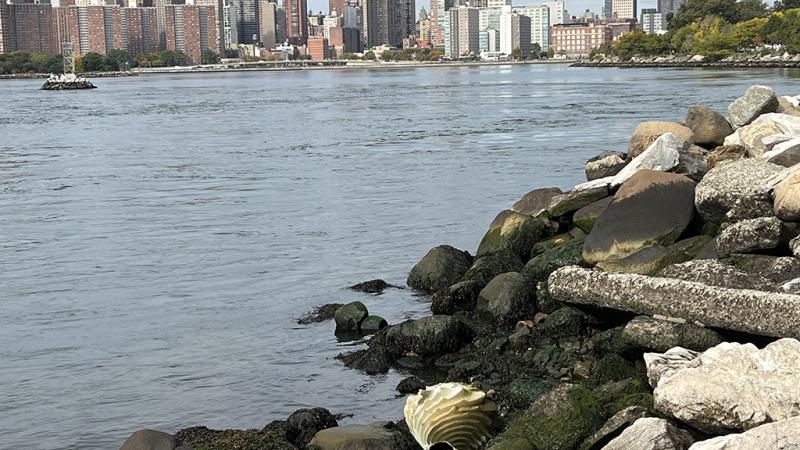RPI architecture students are helping to return Randall’s Island shoreline to a more natural state
November 17, 2022

Students in Rensselaer Polytechnic Institute’s School of Architecture are helping to restore ecology along the shoreline of Randall’s Island in New York City through a unique studio project to create ecological installations designed to cultivate habitat conditions for native species while providing erosion protection.
Much of today’s urban coastline exists as hard sea walls or “riprap” – large, piled stones or other durable material – used to armor the coast against erosion and wave action. “Intertidal Objects: A Design Solution for Coastal Erosion” aims to promote a living shoreline in which the coasts exist in softer forms with vegetation and other life that mitigate against storm surges.
Over the summer term, students — led by Professor Marcus Carter and research assistant Joli Brown — studied what happens within the ecosystem of intertidal waters, using the New York-New Jersey Harbor Estuary as a site for intervention.
Understanding what used to grow in the intertidal zone and what could thrive there, the students designed, fabricated, and installed three-dimensional concrete objects to fit into existing shoreline riprap, meeting the performance criteria of ecological coastal armoring units.
When placed in intertidal waters, these units are intended to create micro-environments for small aquatic creatures and algae. The geometric shapes yield miniature tidal pools and promote plant growth through voids and surface articulations. The objects had to perform yet have visual interest as they would be visible along the shoreline, Carter said.
Given this was a design-build studio course, part of the challenge was moving from concept into fabrication, a design exercise in itself, Carter said. The units were fabricated on campus in Troy and then installed at Randall’s Island in New York City, where a marine biologist will observe the efficacy of the proposals over time.
“This is a project that sought to think ecologically and urbanistically through discrete interventions that explored form and material science,” Carter said. “As units within a potentially larger system, they could aggregate to shape an entire ecological shoreline.”
The RPI students who participated are: Brendan Bielanda, Aditi Jayashankar, Abigail Light, Miranda Luck, Ethan Mihlstin, Cooper Myers, Mary Reynolds, Jennifer Russo, Teshawn Sinclair, and Page Wheeler.
The team collaborated with the Randall’s Island Park Alliance (Park-As-Lab Program) for the project.
Watch a video of the project.